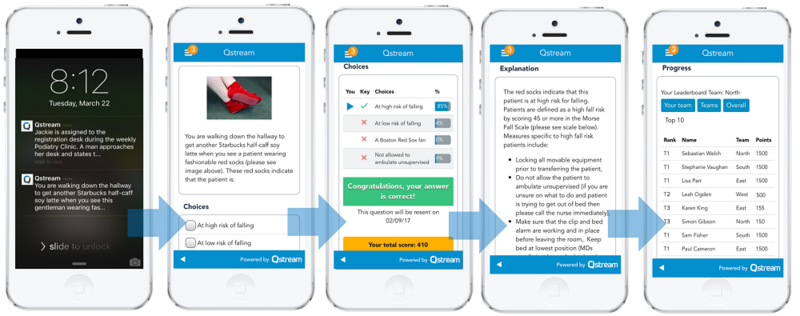ATD Blog
Thinking FAST Leads to Learning and Development Success
Fri Jan 11 2019

The world of healthcare is ever-changing, and L&D professionals are continually on the lookout for the latest strategies and technologies to implement within their healthcare organization.
Two important aspects of any L&D program are engagement and the speed at which the desired outcome is reached. Improving knowledge retention through L&D programs can happen only through increased healthcare professional engagement, which can be a challenge since the idea of work within work isn’t always appealing to busy employees.
One effective strategy you can use to quickly secure participant buy-in is to create lessons that are FAST: Fun, Actionable, Simple, Transparent.
Breaking it down further, thinking FAST means:
**Fun—**Work is hard enough; creating a fun learning program encourages clinician participation and improves overall engagement.
**Actionable—**An actionable program applies learning through context-rich scenarios that reinforce the clinical information or skills each person is accountable for. These tasks stem from top-level, executive initiatives, such as patient quality and safety, changes in guidelines, minimization of adverse events, performance achievement, and so on.
**Simple—**Keep it simple and adhere to the minimum-effective dose (MED) method, which presents the smallest amount of information possible that will produce the desired outcome. Tasks can take as little as two to three minutes each day and be delivered within the daily workflow through a mobile app.
**Transparent—**Transparency encourages open communication and explains to team members why you’re implementing these initiatives and how they—as well as the entire healthcare organization—will benefit. Leveraging game-like mechanics also creates a fun competition and helps individuals and teams see how they compare against peers. Plus, managers who have access to insights on which team members need support in specific areas can provide meaningful and effective coaching for each individual.
Microlearning is an excellent example of applying FAST thinking to an established L&D program. It promotes employee interaction and features challenges based on real-world experiences, and can complement and extend existing L&D initiatives. And, as Donald Taylor’s 2017 Learning Sentiment Study discovered, microlearning environments that are adaptive and collaborative—like Qstream’s microlearning solution—have great success rates.
3 Tips to Ensure Your Microlearning Strategy Achieves Macro Results
For a closer look, here’s an example of a FAST Qstream microlearning experience in action:

The lesson starts with transparent communication leading up to and through the exercise, beginning with a notification alerting participants that a new challenge is waiting.
After selecting the challenge, participants are launched into a simple, fun, and actionable context-rich scenario that engages them within a safe environment—on their mobile device or laptop.
Once the exercise is completed and submitted, participants receive immediate (and transparent) feedback. There’s a visual indicator of which questions they answered correctly or incorrectly, how they fared against their peers, and when they’re going to see this question again. The last point reinforces that successful retention is based on repetition—the spacing effect—rather than through a one-time presentation of information.
The explanation is microlearning uses short text or videos to reinforce your key messages. Since microlearning reinforces key messages and behaviors in a different way, it can link back to other learning systems to complement your existing L&D methods.
Additionally, participants earn points through this FAST microlearning experience with a view of the leaderboard, once again showing transparency in where the user stands among their peers and reinforcing the fun aspect of the challenges.
As this example shows, adding FAST microlearning techniques to your already-existing L&D initiatives can improve the speed in which your key learning objectives are met as well as increase clinician engagement and enjoyment.
Thinking FAST is one of five microlearning principles that are proven to change on-the-job behaviors and boost knowledge retention. Watch this free webinar to learn more about how microlearning changes behavior and impacts business outcomes.
